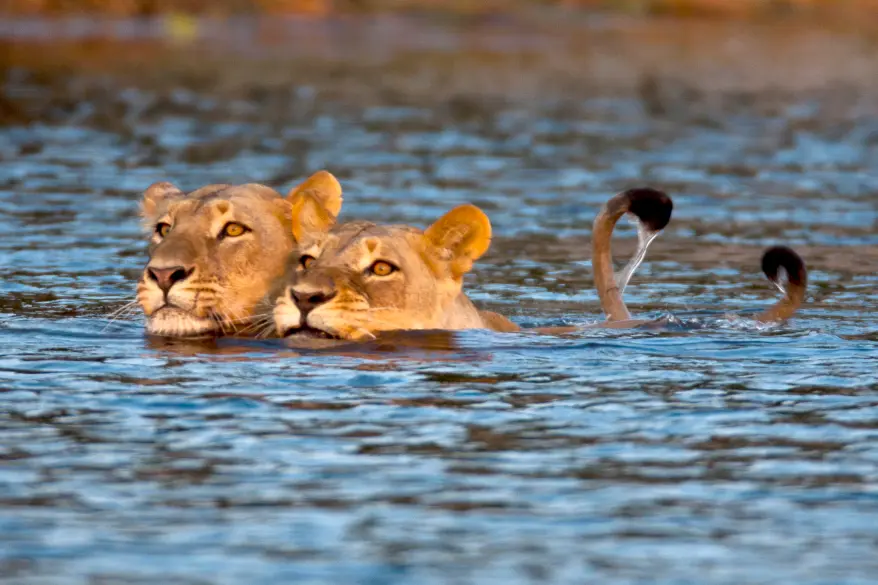By: Carol Fang
During a late night in February this year, a 3-legged lion name Jacob looks across the Kazinga Channel along with his brother, hoping to swim across. After losing a battle for territory against other male lions, the brothers came face to face with the channel in Queen Elizabeth National Park, Uganda.
Jacob had lost his foot due to a poacher’s trap. He and his brother, Tibu, attempted to cross the river for the chance to find a mating partner. Once they heard a roar from a lioness on the other side of the channel, they couldn’t resist and dove into the water.
Their attempts were foiled when they encountered what seemed to be either crocodiles or hippos in the water, according to a thermal drone that was recording them. Conservation Biologist, Alexander Braczkowski from Griffith University in Australia, says,
“It was pretty dramatic. It looks like two tiny little heat signatures crossing an ocean.”
The lions swam nearly a mile across a ten –twenty feet deep river. They made it upon shore on the other side of the channel. The two lions’ quest was as a result to the gender ratio of males to females in the national park, which is two to one. Braczkowski suspects that this skewed ratio originated from local farmers poaching and poisoning lions to protect their livestock. Most of the lions that were poisoned were females, setting the unbalanced ratio.
Craig Packer, a lion expert, sums up the lions’ behavior and ambitions through a sentence. He says, “If they can tell that there are females over there and no males, it would be, ‘Sign me up! Sign me up!’”











